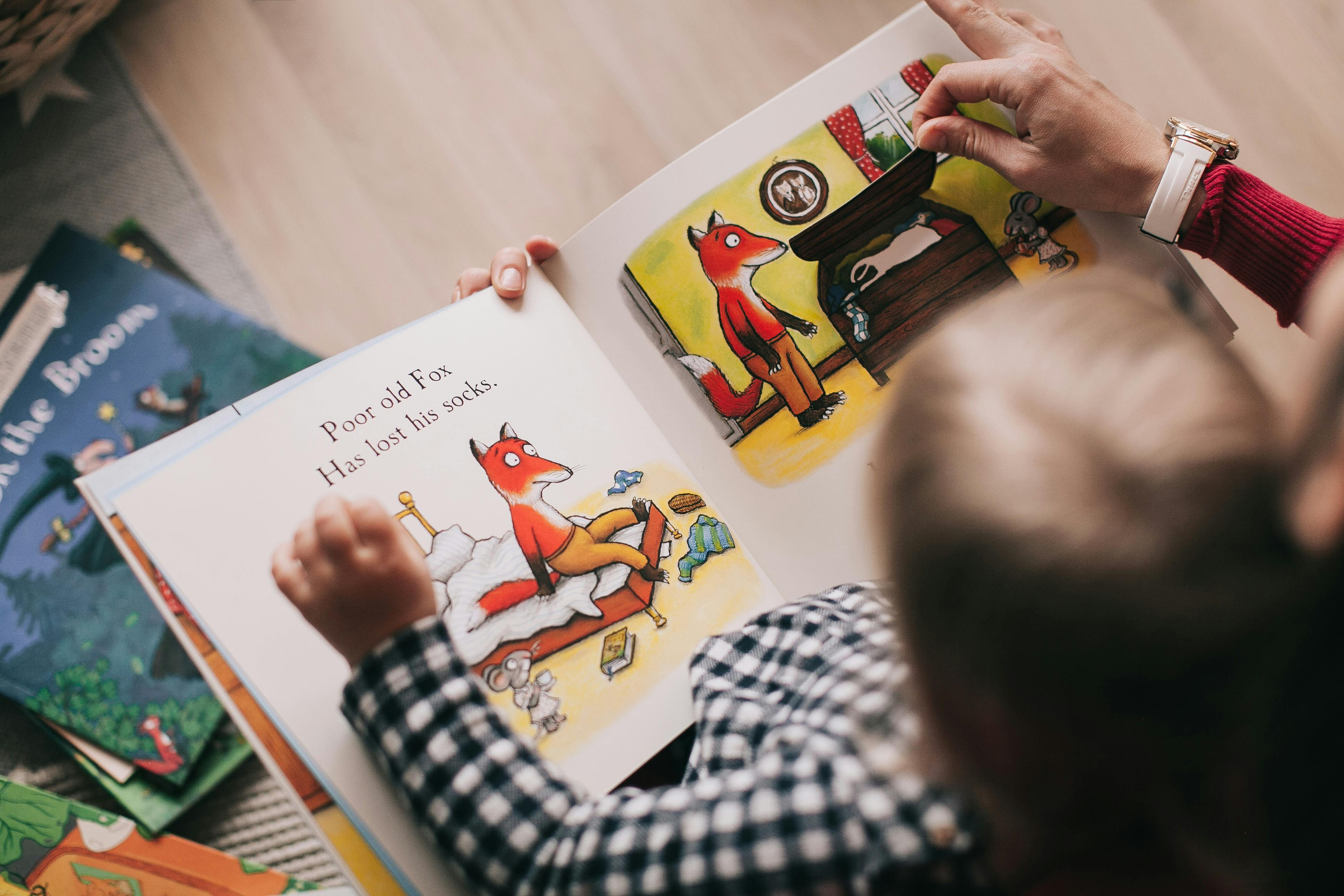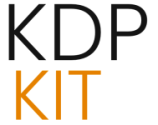The Art and Business of Children’s Book Illustration for KDP

The world of children’s literature is a vibrant and ever-evolving landscape, and at its heart lies the captivating power of illustration. For aspiring authors and illustrators looking to make their mark on Amazon’s Kindle Direct Publishing (KDP) platform, understanding the nuances of children’s book illustration is paramount. This comprehensive guide delves into the trends, techniques, and business considerations for creating compelling illustrations that resonate with young readers and stand out in a competitive market.
Understanding the Role of Illustration in Children’s Books
Illustrations are far more than mere decorations in children’s books; they are integral to the storytelling experience. They bring narratives to life, convey emotions, clarify complex ideas, and spark the imagination of young minds. For children who are still developing their reading skills, illustrations often serve as a primary means of understanding the plot, characters, and overall mood of a book. As noted by industry professionals, well-illustrated images can express significant parts of a story, sometimes even without the need for words.
The visual style of illustrations can significantly influence a child’s engagement with a book. Different styles evoke different feelings and cater to various age groups and story themes. From the gentle, dreamlike quality of watercolors to the bold, energetic lines of comic-inspired art, each style offers a unique way to connect with young readers.
Key Illustration Trends for 2024-2025
The children’s book illustration industry is dynamic, with new trends emerging regularly. Staying abreast of these shifts is crucial for creating relevant and appealing content for KDP. As of mid-2025, several styles and approaches are particularly prominent:
Minimalist and Naïve Art
Simplicity is a key trend, with a focus on clean lines, essential shapes, and a limited color palette. This style allows children to use their imagination and fill in the narrative gaps, making the reading experience more interactive.
AI-Powered Illustrations
Artificial intelligence has become a significant force in illustration, offering unique styles and rapid creation. AI tools can blend textures, hues, and ideas in novel ways, making them a cost-effective and time-saving option for indie illustrators. Platforms like Dzine AI and MyStoryBot are emerging as game-changers for creating consistent AI characters for children’s books.
Comic Book Art
Characterized by actionable frames, bold lines, vibrant colors, and panel layouts, comic book art brings excitement and dynamic storytelling to children’s books. This style is particularly effective for engaging early readers and making learning more interactive.
Doodle Art
This style, featuring playful and sometimes “messy” sketches, offers a charming and approachable aesthetic that appeals to children’s sense of fun and creativity.
Colorful Abstract Illustrations
Abstract art, with its bright hues, unique shapes, and unconventional patterns, captures attention quickly and fosters imaginative thinking. This style can make stories feel dreamy and mysterious, and it adapts well to digital formats.
Cartoon and Comic Styles
Funny expressions, bold lines, large eyes, and bright colors are hallmarks of this style, which brings life and emotion to narratives. It’s highly effective for humorous and action-packed stories, creating relatable characters for young audiences.
Character-Centric Illustrations
Focusing on well-developed and expressive characters is vital. Illustrators are emphasizing relatable characters that can convey a range of emotions, helping children connect with their own feelings.
Textured Illustrations
The use of mixed media, combining traditional techniques like watercolor or collage with digital enhancements, creates artwork with depth and tactile appeal, making each page an immersive experience.
Nostalgic Retro and Hand-Drawn Styles
A resurgence of retro color schemes, textures, and traditional hand-drawn methods, often blended with modern layouts, appeals to both children and adults across generations.
Eco-Friendly and STEM Themes
Illustrations are increasingly reflecting a focus on nature, technology, and sustainability, using vibrant imagery to evoke curiosity and foster an interest in science and environmental consciousness.
Diversity and Representation
Inclusion is a major priority, with illustrators actively depicting characters of diverse ethnicities, abilities, and family structures. This ensures that children see themselves reflected in stories, fostering empathy and connection.
Mental Health and Emotional Storytelling
Illustrations are being used to depict emotional experiences, employing soft color schemes and expressive characters to help children identify and understand their feelings, offering comfort and familiarity.
Popular Illustration Styles
Beyond current trends, certain illustration styles have remained perennial favorites in children’s literature:
- Watercolor Illustrations: Known for their soft textures, delicate hues, and dreamlike qualities, watercolors are ideal for fairy tales and gentle narratives, lending an organic and nostalgic charm.
- Digital Illustrations: Offering sharp, vibrant colors, intricate details, and immense creative versatility, digital art continues to dominate, allowing for a wide range of stylistic adaptations.
- Collage Illustration: This technique, popularized by artists like Eric Carle, uses layered textures and distinct shapes to create visually stimulating and tactile artwork.
- Cartoon Illustration: With thick outlines, expressive characters, and vibrant colors, this approachable style is excellent for humorous or action-packed books, especially for early readers.
- Graphic Novel/Comic-Inspired Illustration: Panel layouts and speech bubbles are increasingly used to tell dynamic stories, appealing to middle-grade readers transitioning from picture books.
- Mixed Media Illustration: Blending traditional and digital elements, this eclectic style allows for experimental approaches to perspective, texture, and format, giving each book a unique visual signature.
Becoming a Children’s Book Illustrator for KDP
For aspiring illustrators, KDP offers a direct path to publishing. The process involves understanding the platform’s requirements and developing a marketable skill set.
Essential Skills and Tools
- Artistic Proficiency: A strong foundation in drawing, composition, color theory, and storytelling through visuals is crucial.
- Software Proficiency: Familiarity with illustration software is essential. Popular choices include:
- Adobe Creative Suite (Photoshop, Illustrator, InDesign): Industry standards offering comprehensive tools for illustration and layout.
- Procreate: A powerful iPad app favored for its intuitive interface and robust drawing capabilities.
- Canva: A user-friendly, accessible platform for creating illustrations and book layouts, especially for beginners.
- Affinity Publisher: A more affordable alternative to Adobe InDesign, offering professional layout features.
- Understanding KDP Specifications: Familiarity with KDP’s requirements for file formats (PDF, JPG), trim sizes, bleed, and margins is vital for print-ready books.
- Storytelling Ability: An illustrator must be able to interpret a manuscript and translate its themes, emotions, and narrative into compelling visuals.
AI Tools for Illustration
AI has revolutionized illustration workflows. Tools like Midjourney, Leonardo AI, and Canva’s AI features can assist in generating concepts, backgrounds, and even character elements. For consistent character generation, platforms like Dzine AI and MyStoryBot are highly recommended. It’s important to note that while AI can be a powerful tool, authors and illustrators must ensure they have the commercial use rights for any AI-generated imagery.
Hiring an Illustrator
Authors who are not illustrators themselves can hire professionals through platforms like Fiverr, Upwork, and Freelancer. When hiring, it’s important to:
- Review Portfolios: Assess the illustrator’s style, quality, and experience with children’s books.
- Discuss Style and Vision: Clearly communicate your expectations for the book’s aesthetic and narrative tone.
- Clarify Copyright: Ensure a clear agreement regarding copyright ownership of the illustrations. Typically, the author retains copyright for the book as a whole, but the illustrator may retain copyright for the individual artwork unless a “work for hire” agreement is in place.
- Negotiate Contracts: Establish clear terms for payment, revisions, deadlines, and usage rights.
The KDP Publishing Process for Illustrated Books
Publishing a children’s book on KDP involves several key steps:
1. Manuscript and Illustration Creation
Write your story and create or commission the illustrations. Ensure the illustrations are high-resolution and formatted correctly for print.
2. Formatting and Layout
Use software like Adobe InDesign, Affinity Publisher, or Canva to lay out the book, integrating text and illustrations. Pay close attention to trim size, margins, and bleed settings as per KDP guidelines. Kindle Kids’ Book Creator is a tool specifically designed for creating illustrated children’s books for the Kindle format.
3. Cover Design
Create an eye-catching cover that reflects the book’s theme and appeals to the target audience. KDP offers a Cover Creator tool, or you can upload your own design.
4. Uploading to KDP
Sign in to your KDP account and enter your book’s metadata, including title, author, description, keywords, and categories. Upload your formatted manuscript (usually as a PDF) and cover file.
5. Pricing and Distribution
Set your book’s price and choose your distribution territories. KDP offers global distribution, and enrolling in KDP Select can provide additional promotional benefits.
6. Marketing and Promotion
Utilize KDP’s marketing tools, such as Amazon Ads, KDP Select promotions (like Kindle Countdown Deals and Free Book Promotions), and external marketing efforts to reach your target audience.
Copyright and Intellectual Property
Understanding copyright is crucial when working with illustrations, especially when using third-party assets or AI-generated images. Authors must hold the publishing rights for all content uploaded to KDP. If you hire an illustrator, ensure your contract clearly defines copyright ownership. When using AI-generated art, verify that you have the commercial use license for the images. KDP’s guidelines state that content under copyright that is freely available on the web cannot be used unless the copyright owner provides permission.
Pricing and Royalties
The cost of illustrations can vary significantly depending on the illustrator’s experience, style, and the complexity of the artwork. Professional illustrators may charge anywhere from $50 to several hundred dollars per illustration, or work on a project basis. For a full book, illustration costs can range from a few hundred to several thousand dollars.
KDP royalty rates are subject to change and can depend on regional pricing thresholds. Authors should research pricing strategies to ensure profitability, considering both the cost of illustration and market demand.
Conclusion
The journey of creating and publishing a children’s book on KDP is a rewarding endeavor that blends creativity with business acumen. By understanding current illustration trends, mastering essential artistic and technical skills, and navigating the KDP platform effectively, aspiring authors and illustrators can bring their stories to life and connect with a global audience of young readers. Whether you choose to illustrate yourself, collaborate with an artist, or leverage AI tools, a commitment to quality, originality, and understanding your audience will pave the way for success in the vibrant world of children’s book publishing.








